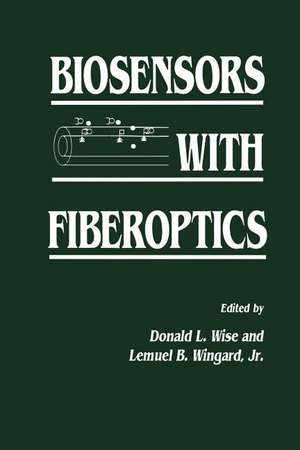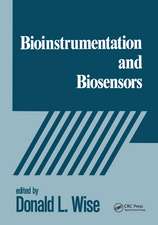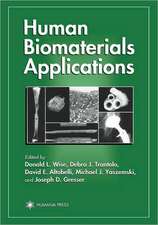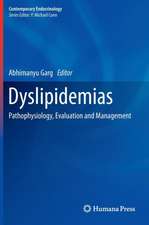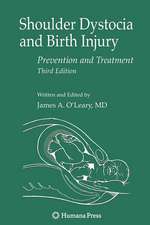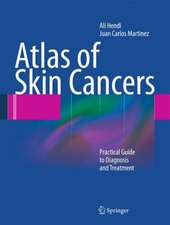Biosensors with Fiberoptics: Contemporary Instrumentation and Analysis
Autor Jr. Wingard, Donald L. Wiseen Limba Engleză Paperback – 27 sep 2012
With contributions by leading experts directly involved in key areas of this exciting, fast-paced field, the book describes novel biosensor technologies and such current and potential applications as: chemical sensing • fluorescent labels • evanescent-wave biosensors and immunosensors • clinical applications • immunoassay kinetics • luminescence • monitoring of environmental toxins.
Researchers and clinicians in a broad spectrum of disciplines will find Wise and Wingard's Biosensors with FIBEROPTICS an extremely practical, up-to-date reference text.
| Toate formatele și edițiile | Preț | Express |
|---|---|---|
| Paperback (1) | 720.68 lei 6-8 săpt. | |
| Humana Press Inc. – 27 sep 2012 | 720.68 lei 6-8 săpt. | |
| Hardback (1) | 1423.95 lei 6-8 săpt. | |
| Humana Press Inc. – mar 1991 | 1423.95 lei 6-8 săpt. |
Preț: 720.68 lei
Preț vechi: 758.60 lei
-5% Nou
Puncte Express: 1081
Preț estimativ în valută:
137.91€ • 147.47$ • 114.98£
137.91€ • 147.47$ • 114.98£
Carte tipărită la comandă
Livrare economică 17 aprilie-01 mai
Preluare comenzi: 021 569.72.76
Specificații
ISBN-13: 9781461267829
ISBN-10: 146126782X
Pagini: 388
Ilustrații: XIV, 370 p.
Dimensiuni: 155 x 235 x 20 mm
Greutate: 0.54 kg
Ediția:Softcover reprint of the original 1st ed. 1991
Editura: Humana Press Inc.
Colecția Humana
Seria Contemporary Instrumentation and Analysis
Locul publicării:Totowa, NJ, United States
ISBN-10: 146126782X
Pagini: 388
Ilustrații: XIV, 370 p.
Dimensiuni: 155 x 235 x 20 mm
Greutate: 0.54 kg
Ediția:Softcover reprint of the original 1st ed. 1991
Editura: Humana Press Inc.
Colecția Humana
Seria Contemporary Instrumentation and Analysis
Locul publicării:Totowa, NJ, United States
Public țintă
Professional/practitionerCuprins
Concepts, Biological Components, and Scope of Biosensors.- 1. Concept of a Biosensor.- 2. Biological Components.- 3. Transducers.- 4. Potential Applications.- References.- Chemical Sensing with Fiberoptic Devices.- 1. Introduction.- 2. Classification.- 3. Instrumentation.- 4. Analytical Characteristics.- 5. pH Sensors.- 6. Sensors for Anions.- 7. Sensors for Cations.- 8. Sensors for Gases.- 9. Sensors for Biochemicals.- 10. Sensors for Organic Compounds.- 11. Miscellaneous Sensors.- 12. Conclusions.- References.- Fluorescent Labels.- 1. Introduction.- 2. Fluorescence Excitation and Detection.- 3. Chemically Reactive Groups.- 4. Conclusions.- References.- Chemistry and Technology of Evanescent Wave Biosensors.- 1. Introduction.- 2. Why Fiberoptics?.- 3. Fiberoptic Fundamentals.- 4. Configurations for Fiberoptic Biosensors.- 5. Biochemical Architecture of Biosensors.- 6. Approaches for Improved Fiberoptic Biosensors.- 7. Summary.- Acknowledgments.- References.- Optical Characteristics of Fiberoptic Evanescent Wave Sensors Theory and Experiment.- 1. Introduction.- 2. Theory of Evanescent Wave Excitation and Detection of Fluorescence.- 3. Results Calculated from Theory.- 4. Results Based on Experiments.- 5. Summary and Conclusions.- 6. Symbols.- Acknowledgments.- References.- Evanescent Wave Immunosensors for Clinical Diagnostics.- 1. Introduction.- 2. Materials and Methods.- 3. Characterization of the Fiber as a Solid-Phase Surface-Isotopic Model.- 4, Fiberoptic Evanescent Wave Immunoassay (EWS).- 5. Summary and Discussion.- References.- Instrumentation for Cylindrical Waveguide Evanescent Fluorosensors.- 1. Introduction.- 2. Evanescent Waves.- 3. Importance of Numerical Aperture.- 4. Why Cylindrical Waveguides?.- 5. Optical System.- 6. Excitation System.- 7. Detection System.- 8. Filters.- 9. Optical Background.- 10. Sensitivity.- 11. Multiplex Operation.- 12. Applications.- Acknowledgments.- References.- Immunoassay Kinetics at Continuous Surfaces.- 1. Introduction.- 2. Abbreviations.- 3. The Continuous Surface.- 4. Effects of Diffusion at Continuous Surfaces.- 5. Optical Techniques Applied to Immunoassays at a Continuous Surface.- 6. Discussion and Conclusions.- Acknowledgment.- References.- Luminescence in Biosensor Design.- 1. Introduction.- 2. Bioluminescent Reactions.- 3. Immobilized Enzymes for Bioluminescent Analysis 2%.- 5. Bio-and Chemiluminescence Analysis with Fiberoptic Sensors.- 6. Conclusion and Future Trends.- References.- In Vivo Applications of Fiberoptic Chemical Sensors.- 1. Introduction.- 2. Critical Issues and Design Criteria.- 3. Oxygen Sensors.- 4. pH Sensors.- 5. Carbon Dioxide Sensors.- 6. Conclusions.- References.
Recenzii
Many of the key issues are well covered in this book which must be recommended as a necessary addition to any biosensor library.-The Genetic Engineer & Biotechnologist
